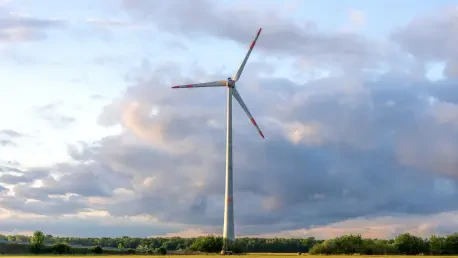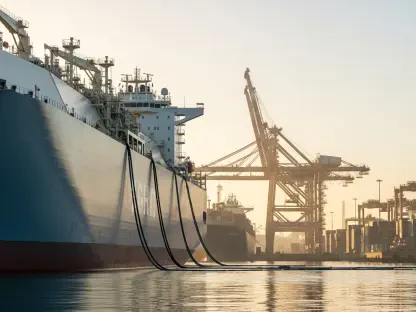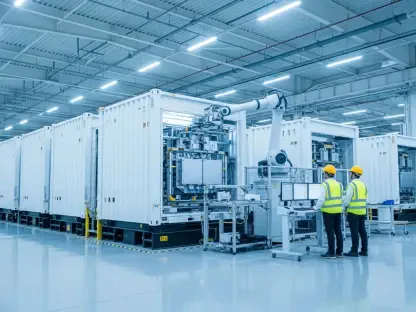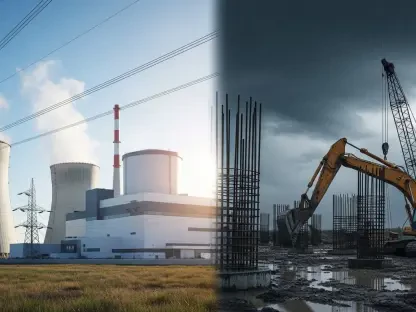What happens when a nation’s quest for clean energy becomes a battle for industrial supremacy? India is rewriting the rules of the game with groundbreaking wind turbine regulations that prioritize local manufacturing over foreign dependency, a move that could redefine its position in the global renewable energy market. Announced by the Ministry of New and Renewable Energy (MNRE), these policies are not just about harnessing wind—they’re about building a fortress of self-reliance in a sector critical to the country’s sustainable future. This seismic shift is stirring excitement and uncertainty across the renewable energy landscape, promising to reshape how India powers its ambitious green goals.
The Stakes Behind India’s Wind Turbine Revolution
At the heart of this transformation lies a staggering target: achieving 500 gigawatts (GW) of non-fossil fuel capacity by 2030, a massive leap from the current 235.6 GW. With wind energy as a cornerstone of this vision, the reliance on imported components has long been a weak link, exposing vulnerabilities in supply chains. The new rules, rolled out with precision, aim to fortify domestic production while addressing data security, making them a linchpin for national interests beyond just energy.
This isn’t merely a technical update—it’s a strategic maneuver. India’s annual wind turbine manufacturing capacity stands at 20 GW, a foundation that these regulations intend to expand by mandating local sourcing and innovation. The ripple effects could redefine economic growth, job creation, and energy independence, positioning the country as a global contender in renewable technology.
Decoding the New Rules for Wind Energy
The regulations are a multi-pronged blueprint for change, targeting every facet of the wind turbine ecosystem. Manufacturers must now procure critical components—blades, towers, generators, gearboxes, and specialized bearings—from a government-approved list of vendors, ensuring a domestic-first approach. This move is designed to bolster local industries and reduce exposure to international market fluctuations.
Beyond physical components, data protection emerges as a priority. All operational data from wind turbines must be stored within India, with a strict ban on real-time data transfers abroad, safeguarding sensitive information. Additionally, companies are mandated to establish operational control and research centers in the country within one year, embedding innovation into the national fabric.
Compliance isn’t optional—MNRE-appointed technical teams will oversee adherence, supported by a forthcoming standard operating procedure and an approved list of models and manufacturers. Exemptions exist for ongoing projects, capped at 800 MW over two years with quarterly reporting, offering a buffer during the transition. These layers of policy reflect a calculated push toward a self-sufficient energy sector.
Industry Reactions: Winners and Hurdles
The winds of change are blowing differently for various players in the sector. Domestic giants like Suzlon Energy, Inox Wind, and Adani Wind are poised to thrive as the market tilts in their favor. A senior executive from Suzlon Energy commented, “These rules give Indian manufacturers the edge we’ve needed to compete on a global scale, fostering growth at home.”
Foreign firms, however, face headwinds. China’s Envision Group, a major presence in India’s wind market, may struggle with the stringent localization norms. Industry analysts point out that such policies mirror a broader global trend of reducing dependency on international supply chains in strategic sectors, a shift that could redefine partnerships and investments.
The dichotomy of impact is stark. While local players celebrate a long-overdue advantage, international companies must recalibrate their strategies to align with India’s vision of self-reliance. This tension underscores the delicate balance between fostering domestic growth and maintaining global collaboration.
Charting the Path Forward for Stakeholders
Adapting to these regulations demands actionable strategies from industry participants. Manufacturers need to swiftly forge partnerships with approved domestic vendors to secure compliant supply chains for essential components. Delays in this alignment could disrupt production timelines and market positioning.
Setting up in-country operational and research facilities within the mandated one-year window is another critical step. This requires not just infrastructure investment but also a focus on talent acquisition to drive innovation locally. For projects under exemption, meticulous quarterly reporting to MNRE will be essential to avoid penalties and ensure smooth operations.
Data localization adds another layer of complexity—investing in secure, India-based storage solutions is non-negotiable. Staying abreast of MNRE’s updates on approved models and procedures will further help stakeholders navigate this evolving landscape. These practical measures are the roadmap to turning regulatory challenges into opportunities for growth.
Reflecting on a Pivotal Shift
Looking back, India’s wind turbine regulations marked a defining moment in the nation’s renewable energy journey. They stood as a testament to the resolve to prioritize local manufacturing, weaving economic strength with environmental goals. The emphasis on data security and domestic innovation laid a foundation for resilience in a critical sector.
The path ahead called for collaboration—between government, industry, and global partners—to refine these policies and address implementation gaps. Stakeholders had to invest in capacity building, from supply chains to skilled workforces, to sustain this momentum. Above all, the focus remained on balancing immediate compliance with the long-term vision of energy independence, ensuring that India’s wind power ambitions soared to new heights.









